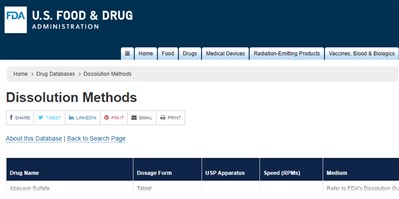Working with a new formulation typically requires development of a new dissolution method. What apparatus or media should you use? If the product is already well established, do you need to start from scratch? In this post, kenboda delivers key advice as well as a collection of resources available to help get you moving in the right direction.
We routinely receive questions from our customers related to dissolution method development.
- "What is the dissolution method for my product?"
- "What dissolution media should I use for my product?"
When working with a new formulation, you will usually need to develop a dissolution method for it. Even when you're working with a drug that is well established, your specific formulation may require special considerations compared to what the established methods are. Luckily, you don't need to start method development from scratch and there are a lot of great resources to look through to help figure out some of the key method development questions.
United States Pharmacopeia (USP) – https://www.usp.org/resources/dissolution-methods-database

The USP is a good place to start the search for your dissolution method. This contains a large number of methods for established drug products. You will notice in many of the drug monographs that there are several methods for the same drug product. These methods reflect the specific needs for formulations with different dosage type (e.g., tablets, capsules, beads, etc.), release rates (e.g., immediate, delayed, extended), technologies, and so on. If your API is contained in one of these monographs, it can be a good starting point for method development activities and help narrow the testing.
It is important to note a couple of common misconceptions about methods that you find in the USP. First, USP methods are not complete dissolution methods! They usually do not contain all of the necessary information for a complete method such as filter selection, full media composition, etc. The methods may also miss some components such as sinkers or important steps in the dissolution process. Second, the USP method is a starting point - it is not the ending point of your search. Many analysts treat the USP as if it is a sacred text and cannot be deviated from - this isn't the case. Remember, many monographs contain multiple tests - which demonstrates that Test 1 didn't meet the needs for a product (and perhaps not test 2, 3, 4, etc. either). Third, methods in the USP do not represent current data. Methods in the USP have been submitted previously, and the method that you find may be one that is a decade or two old. There are references in the USP to obsolete equipment and accessories, and you may find that you need to adapt methods considerably.
US FDA - https://www.accessdata.fda.gov/scripts/cder/dissolution/dsp_getallData.cfm

The FDA Dissolution Method Database is another excellent tool to find partial dissolution methods for many products. Similar to the USP, this database doesn't necessarily reflect current methods - but the methods do tend to have some more recent submissions. These methods aren't complete - you will only find the media, agitation speed, apparatus, and time points.
DDG (Dissolution Discussion Group) – www.dissolution.com
The Dissolution Discussion Group is a long-running free forum that I referenced quite a bit early in my career, and still do. The DDG has a lot of previously asked questions about different products and methods and can be a good place to try to track down information.
Dissolution Technologies Magazine – www.dissolutiontech.com
This magazine is the only one I'm aware of which focuses specifically on dissolution testing. It is a free subscription and you can also find back issues on the website. There have been many articles detailing working with difficult formulations or classes of formulations, and I encourage checking here for resources.
Recorded Webinars – https://www.agilent.com/en/training-events/eseminars/dissolution
Agilent’s complete repository of dissolution webinars is extensive and covers many different topics. One specific session on Method Development may be found in the “Foundation to Innovation” series. There is also a complete “Method Transfer” series consisting of four separate sessions for a more exhaustive look at the building, validation, transfer, and troubleshooting of dissolution methods.

Just “Google” it…
Google (or your search engine of choice) can really be your friend for dissolution. I frequently will find a few helpful articles just searching for "drug x dissolution method", "drug x dissolution media", "drug x solubility", and so on. Usually, you're not the only one who has struggled with that product or something similar to it.
These are just some of the tools that that be helpful when starting a dissolution method. As always, feel free to reach out to the dissolution.hotline@agilent.com for further assistance.
Best of luck in your dissolutions!
DE70980512
